
The Majestic Wilderness of Mount Hood National Forest
Explore the natural beauty and outdoor adventures of Mount Hood National Forest in Oregon, with its stunning landscapes, diverse wildlife, and year-round recreational activities.
Mount Hood National Forest is a haven for nature lovers and outdoor enthusiasts. Located in Oregon, this expansive forest is home to a diverse range of flora and fauna. The snow-capped peak of Mount Hood, an iconic stratovolcano, dominates the skyline and provides a stunning backdrop for the surrounding wilderness. Visitors can explore over a thousand miles of trails that wind through old-growth forests, alpine meadows, and pristine lakes. Whether you're an avid hiker, mountain biker, or just looking for a peaceful retreat, there's something here for everyone. The forest also offers numerous camping sites and picnic areas, making it an ideal spot for family outings and weekend getaways. In the winter, Mount Hood transforms into a playground for snow sports enthusiasts. Skiing, snowboarding, and snowshoeing are popular activities, with several resorts and lodges catering to both beginners and seasoned athletes. No matter the season, Mount Hood National Forest promises a memorable experience filled with natural beauty and adventure.
Local tips in Mount Hood National Forest
- Visit in late spring or early fall for the best weather and fewer crowds.
- Carry plenty of water and snacks, especially if you plan on hiking long distances.
- Check trail conditions and weather forecasts before heading out, as conditions can change rapidly.
- Consider staying at one of the nearby lodges or campgrounds to fully experience the forest.
- If you visit in winter, ensure you have proper snow gear and check for any road closures.
The Majestic Wilderness of Mount Hood National Forest
Mount Hood National Forest is a haven for nature lovers and outdoor enthusiasts. Located in Oregon, this expansive forest is home to a diverse range of flora and fauna. The snow-capped peak of Mount Hood, an iconic stratovolcano, dominates the skyline and provides a stunning backdrop for the surrounding wilderness. Visitors can explore over a thousand miles of trails that wind through old-growth forests, alpine meadows, and pristine lakes. Whether you're an avid hiker, mountain biker, or just looking for a peaceful retreat, there's something here for everyone. The forest also offers numerous camping sites and picnic areas, making it an ideal spot for family outings and weekend getaways. In the winter, Mount Hood transforms into a playground for snow sports enthusiasts. Skiing, snowboarding, and snowshoeing are popular activities, with several resorts and lodges catering to both beginners and seasoned athletes. No matter the season, Mount Hood National Forest promises a memorable experience filled with natural beauty and adventure.
When is the best time to go to Mount Hood National Forest?
Iconic landmarks you can’t miss
Bridge of the Gods
Explore the iconic Bridge of the Gods in Cascade Locks, Oregon, where breathtaking views meet rich history in the heart of the Columbia River Gorge.

Mount Hood Railroad
Experience the breathtaking beauty of Oregon on the scenic Mount Hood Railroad, where vintage trains offer a unique view of the Columbia River Gorge.

Rowena Crest Viewpoint
Discover the stunning vistas and hiking trails at Rowena Crest Viewpoint, an iconic spot in the Columbia River Gorge, perfect for nature lovers and photographers.

Jonsrud Viewpoint
Discover the stunning beauty of Jonsrud Viewpoint in Sandy, Oregon, showcasing breathtaking views of Mount Hood and the lush Pacific Northwest landscape.

Tamanawas Falls Trailhead
Experience the breathtaking beauty of Tamanawas Falls, a stunning hiking area in Mt. Hood, Oregon, perfect for nature lovers and adventure seekers.
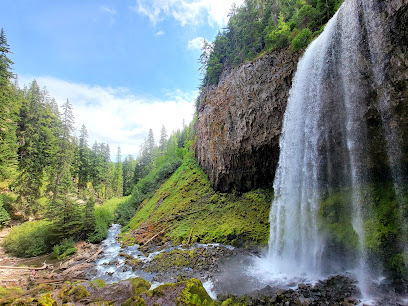
Little Zigzag Falls
Discover the serene beauty of Little Zigzag Falls, a hidden gem in Mt. Hood National Forest, perfect for nature lovers and outdoor enthusiasts.

John B. Yeon State Scenic Corridor
Experience the stunning vistas and natural beauty of John B. Yeon State Scenic Corridor, a true Oregon treasure along the Columbia River Highway.

Mt Hood View Point
Explore the stunning Mt Hood View Point, a must-visit destination for breathtaking views and a serene escape into Oregon's natural beauty.

Mount Hood Wilderness
Experience the breathtaking beauty of Mount Hood Wilderness, a natural preserve filled with stunning landscapes, diverse wildlife, and endless outdoor adventures.

Bull of the Woods Wilderness
Discover the breathtaking landscapes and diverse wildlife of Bull of the Woods Wilderness, a pristine natural retreat in Oregon's heart.

Unmissable attractions to see
Mt. Hood Skibowl
Discover the adventure at Mt. Hood Skibowl, where skiing, snowboarding, and summer thrills meet stunning natural beauty in Oregon.

Mt. Hood Meadows
Discover Mt. Hood Meadows, Oregon's premier ski resort, offering breathtaking landscapes and exhilarating outdoor adventures year-round.

Bridal Veil Falls
Experience the breathtaking beauty of Bridal Veil Falls, a stunning waterfall in Oregon's Columbia River Gorge, perfect for nature lovers and adventurers.

Cascade Locks Marine Park
Explore the scenic beauty and recreational opportunities at Cascade Locks Marine Park, a must-visit destination in Oregon's Columbia River Gorge.

Sternwheeler Columbia Gorge
Experience the beauty of the Columbia River Gorge aboard the Sternwheeler Columbia Gorge, where scenic views and rich history come together for an unforgettable cruise.

Snow Bunny Snow Park
Experience the magic of winter at Snow Bunny Snow Park in Government Camp, Oregon, your ultimate destination for family-friendly winter sports and fun.
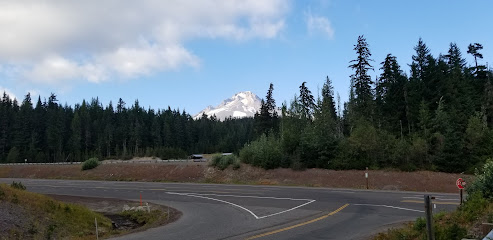
Apple Valley Country Store
Discover the sweet delights of Apple Valley Country Store in Hood River, Oregon, where bakery treats meet delicious ice cream in a charming setting.

Shepperd's Dell Falls
Experience the breathtaking beauty of Shepperd's Dell Falls, a stunning waterfall along the Historic Columbia River Highway in Oregon's picturesque scenery.

Wildwood Recreation Site
Explore the natural beauty of Wildwood Recreation Site, where hiking, picnicking, and serene landscapes await every visitor.
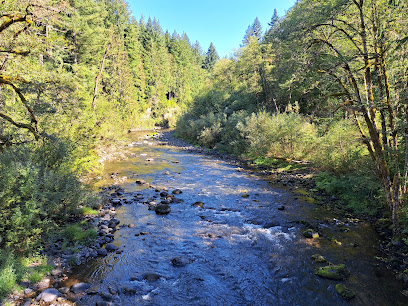
Grateful Vineyard
Experience the beauty of Grateful Vineyard, where exceptional wines meet the breathtaking landscapes of Mt. Hood, Oregon.

Marine Park Pavilion
Experience the serene beauty of Marine Park Pavilion in Cascade Locks, Oregon—an ideal destination for nature lovers and outdoor enthusiasts.

Mt Hood Cultural Center & Museum
Explore the rich heritage and captivating exhibits at Mt Hood Cultural Center & Museum, a must-visit destination for tourists in Oregon.

Hood River U-Pick Organic
Explore the bounty of Hood River U-Pick Organic, where you can hand-pick fresh fruits and enjoy the stunning scenery of the Columbia River Gorge.

Oneonta Trailhead
Experience the breathtaking landscapes and diverse trails of Oneonta Trailhead in Oregon, a must-visit for hiking enthusiasts and nature lovers.

Oneonta Gorge
Discover the breathtaking beauty of Oneonta Gorge in Oregon, a hidden gem known for its stunning waterfalls and lush landscapes.

Essential places to dine
Skyway Bar & Grill
Discover delicious grilled dishes and live music at Skyway Bar & Grill in Zigzag, Oregon – a perfect blend of flavor and entertainment.

Mt. Hood Brewing Co.
Discover the perfect blend of craft brews and hearty meals at Mt. Hood Brewing Co., nestled in Oregon's scenic Government Camp.

Bette's Place
Discover Bette's Place in Hood River: An American breakfast haven offering delicious dishes made from local ingredients.

ZigZag Inn
Discover family-friendly dining at ZigZag Inn in Welches, Oregon—your go-to spot for delicious pizza amidst stunning mountain scenery.

Charlie's Mountain View
Discover family-friendly dining at Charlie's Mountain View in Government Camp - where delicious American cuisine meets stunning mountain vistas.

Barlow Trail Roadhouse
Discover family-friendly dining at Barlow Trail Roadhouse in Welches, OR - where hearty breakfasts meet rustic charm and local legends.

Koya Kitchen
Discover Koya Kitchen in Welches, Oregon – where authentic Japanese flavors meet creative Asian fusion in an inviting atmosphere.

Mesquitery Restaurant & Bar
Discover the culinary delights of Mesquitery Restaurant & Bar in Hood River - where steak lovers unite in a vibrant atmosphere.

Twin Peaks Drive In
Experience delicious burgers and delightful ice cream at Twin Peaks Drive In in Hood River - perfect for families and food lovers alike.

Rendezvous Grill
Discover Rendezvous Grill: A culinary haven in Welches offering exceptional grilled dishes amidst Oregon's stunning landscape.

AL FORNO FERRUZZA PIZZA RHODODENDRON
Discover the authentic taste of Italy at Al Forno Ferruzza Pizza - where every slice tells a story.

Zigzag Mountain Cafe
Discover the charm of Zigzag Mountain Cafe – where hearty breakfasts meet breathtaking mountain views in Rhododendron, Oregon.

The Glacier House
Experience Oregon's finest at The Glacier House—where local flavors meet family-friendly hospitality amidst stunning mountain views.

Stonehedge Gardens
Discover the culinary charm of Stonehedge Gardens in Hood River—where exquisite seafood and steak meet stunning vineyard views.

Cascade Dining Room
Experience fine dining at Cascade Dining Room with breathtaking views of Mount Hood and exceptional local cuisine.

Markets, malls and hidden boutiques
Mount Hood National Forest
Explore the breathtaking landscapes and outdoor adventures in Mount Hood National Forest, Oregon's premier destination for nature enthusiasts.

The Gorge White House
Discover the charm of The Gorge White House, where local flavors and stunning views of the Columbia River Gorge meet in perfect harmony.

Hoodland Thriftway
Discover local flavors at Hoodland Thriftway, your go-to grocery store in Welches, Oregon, offering fresh produce and artisanal goods.
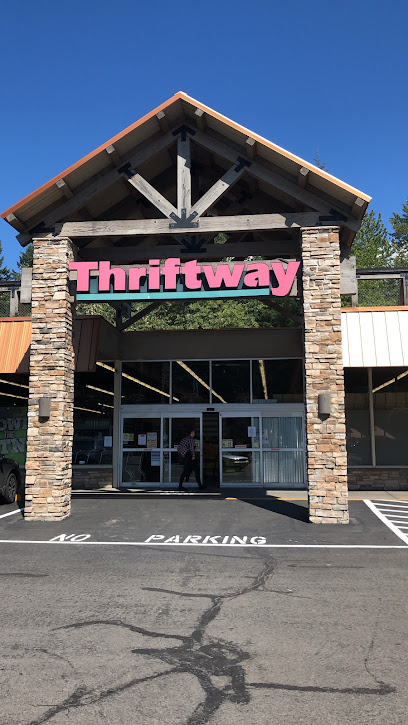
Hoodland Shopping Center
Explore Hoodland Shopping Center in Welches, Oregon - Your destination for local crafts, unique souvenirs, and community charm.

Next Adventure Sandy Outdoor Store
Your ultimate destination for outdoor gear and adventure in Sandy, Oregon – from camping to skiing, we have it all!

Govy General Store
Discover local flavors and essentials at Govy General Store, the charming grocery shopping destination in Government Camp, Oregon.

Mt. Hood Outfitters
Explore the ultimate outdoor adventure at Mt. Hood Outfitters, your go-to tour operator in Government Camp, Oregon.

STOKED Roasters + Coffeehouse
Discover the heart of Hood River with artisanal coffee and a friendly atmosphere at STOKED Roasters + Coffeehouse, your perfect coffee retreat.

Mt Hood Cultural Center & Museum
Discover the rich history and cultural significance of the Mt. Hood region at the Mt. Hood Cultural Center & Museum, an enriching experience for all visitors.
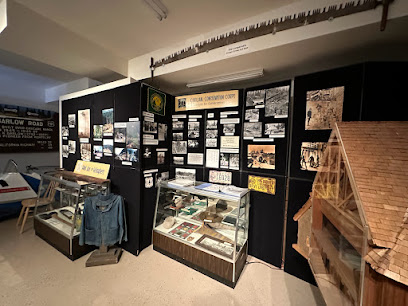
The Old Trunk
A charming blend of antiques, fresh fruits, and delicious ice cream awaits at The Old Trunk in Hood River, Oregon.

Mt Hood Foods
Explore the flavors of Oregon at Mt Hood Foods, your go-to grocery store in the heart of Rhododendron, ideal for stocking up on local and fresh produce.

WINDMASTER by US MARKET
Explore the best of Hood River at WINDMASTER by US MARKET – your go-to grocery store for local goods and essentials.

Shortt Supply
Discover your outdoor adventure gear at Shortt Supply, Hood River's ultimate destination for camping, hiking, and sportswear.

Doug's Hood River
Explore the best outdoor gear and clothing at Doug's Hood River, your go-to shop for skate, ski, and snowboard essentials in Oregon.

Volcanic Bottle Shoppe
Experience the unique flavors of Hood River at Volcanic Bottle Shoppe, your go-to spot for craft beers and fine wines in Oregon.

Essential bars & hidden hideouts
Skyway Bar & Grill
Experience the best of American cuisine and live music at Skyway Bar & Grill in Zigzag, Oregon, a must-visit destination for every food-loving traveler.
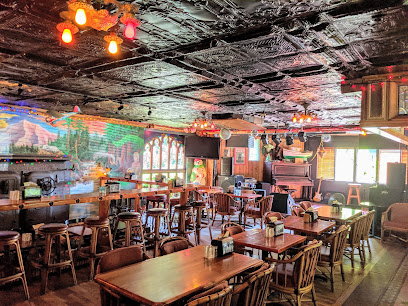
Mt. Hood Brewing Co.
Experience the best of Oregon's craft brewing at Mt. Hood Brewing Co., where exceptional flavors meet stunning mountain views.

ZigZag Inn
Discover ZigZag Inn, a charming family restaurant in Welches, Oregon, specializing in delicious pizzas and inviting dining experiences.

Double Mountain Brewery
Discover the vibrant brews, delicious pizzas, and lively atmosphere at Double Mountain Brewery in Hood River, Oregon – a true gem for craft beer lovers.

Charlie's Mountain View
Discover Charlie's Mountain View: A family-friendly restaurant and bar in Government Camp, offering stunning views and delicious American cuisine.

Scooter's Restaurant & Sports Bar
Experience the perfect blend of delicious grilled fare and lively sports ambiance at Scooter's Restaurant & Sports Bar in Sandy, Oregon.

Barlow Trail Roadhouse
Discover the unique charm of Barlow Trail Roadhouse, a family-friendly restaurant and bar in Oregon's beautiful countryside, perfect for breakfast and relaxation.

Ratskeller
Experience the charm of Ratskeller in Government Camp, where great food meets a cozy atmosphere, perfect for unwinding after your mountain adventures.

Koya Kitchen
Experience a unique blend of authentic Japanese, Indian, and Nepalese cuisine at Koya Kitchen in Welches, Oregon – a culinary gem for all food lovers.

Rendezvous Grill
Discover the flavors of Oregon at Rendezvous Grill, where every meal is a celebration of local ingredients and warm hospitality.

The Glacier House
Experience the charm of The Glacier House, a family-friendly restaurant and pub in Government Camp, Oregon, offering delicious local cuisine.

Whistle Stop
Discover the charm of Whistle Stop in Welches, Oregon - a grill and breakfast restaurant offering delicious meals in a cozy ambiance.

Celilo Restaurant & Bar
Experience exceptional American cuisine with a Pacific Northwest twist at Celilo Restaurant & Bar, a fine dining destination in Hood River, Oregon.

No Place Saloon
Discover the lively atmosphere of No Place Saloon in Sandy, Oregon, where good drinks and great entertainment come together for an unforgettable experience.

Whiskey Tango
Discover Whiskey Tango in Hood River, Oregon - a cocktail bar where expert mixology meets a vibrant atmosphere, perfect for unwinding and enjoying local flavors.

Local Phrases about Mount Hood National Forest
-
- HelloHowdy
[haʊdi] - GoodbyeSee ya
[siː jə] - YesYup
[jʌp] - NoNope
[noʊp] - Please/You're welcomePlease
[pliːz] - Thank youThanks
[θæŋks] - Excuse me/SorryPardon
[pɑrdən] - How are you?Howdy partner?
[haʊdi ˈpɑːrtnər] - Fine. And you?Jus' fine. You?
[dʒʌs faɪn juː] - Do you speak English?Ya speak English?
[jə spiːk ˈɪŋɡlɪʃ] - I don't understandNo clue
[noʊ kluː]
- HelloHowdy
-
- I'd like to see the menu, pleaseMenu, please
[ˈmɛnjuː pliːz] - I don't eat meatNo meat for me
[noʊ mit fɔr miː] - Cheers!Cheers!
[tʃɪrz] - I would like to pay, pleaseCheck, please
[tʃɛk pliːz]
- I'd like to see the menu, pleaseMenu, please
-
- Help!Help!
[hɛlp] - Go away!Git!
[ɡɪt] - Call the Police!Call the Sheriff!
[kɔl ðə ˈʃɛrɪf] - Call a doctor!Call the doc!
[kɔl ðə dɑk] - I'm lostLost
[lɔst] - I'm illSick
[sɪk]
- Help!Help!
-
- I'd like to buy...I wanna buy...
[aɪ ˈwɑnə baɪ] - I'm just lookingJust lookin'
[dʒʌst ˈlʊkɪn] - How much is it?How much?
[haʊ mʌtʃ] - That's too expensiveToo pricy
[tuː ˈpraɪsi] - Can you lower the price?Can ya do less?
[kæn jə duː lɛs]
- I'd like to buy...I wanna buy...
-
- What time is it?What's the time?
[wɑts ðə taɪm] - It's one o'clockIt's one
[ɪts wʌn] - Half past (10)Half past ten
[hæf pæst tɛn] - MorningMornin'
[ˈmɔrnɪn] - AfternoonAfternoon
[ˌæftərˈnun] - EveningEvenin'
[ˈivnɪn] - YesterdayYest'day
[ˈjɛstˌdeɪ] - TodayToday
[təˈdeɪ] - TomorrowTomorra
[təˈmɔrə] - 1One
[wʌn] - 2Two
[tuː] - 3Three
[θriː] - 4Four
[fɔr] - 5Five
[faɪv] - 6Six
[sɪks] - 7Seven
[ˈsɛvən] - 8Eight
[eɪt] - 9Nine
[naɪn] - 10Ten
[tɛn]
- What time is it?What's the time?
-
- Where's a/the...?Where's the...?
[wɛərz ðə] - What's the address?Address?
[əˈdrɛs] - Can you show me (on the map)?Show me on the map
[ʃoʊ mi ɒn ðə mæp] - When's the next (bus)?Next bus?
[nɛkst bʌs] - A ticket (to ....)Ticket
[ˈtɪkɪt]
- Where's a/the...?Where's the...?
History of Mount Hood National Forest
-
For thousands of years, the area now known as Mount Hood National Forest was home to various Native American tribes including the Multnomah, Wasco, and Clackamas tribes. These tribes utilized the forest's abundant resources for hunting, fishing, and gathering, and Mount Hood itself held spiritual significance in their cultures.
-
In 1805-1806, the famed Lewis and Clark Expedition passed through the Columbia River Gorge, just north of what is now Mount Hood National Forest. Their journey provided some of the earliest European-American documentation of the region, noting the stunning landscape and diverse ecosystems.
-
During the mid-19th century, Mount Hood became a landmark for settlers traveling the Oregon Trail. The Barlow Road, completed in 1846, was the last overland segment to the Willamette Valley and skirted the southern flanks of Mount Hood, offering a perilous but critical route for pioneers.
-
Mount Hood National Forest was established as part of the Cascade Range Forest Reserve on September 28, 1893, by President Grover Cleveland. This designation aimed to protect the forest's natural resources from over-exploitation and to maintain the watershed.
-
During the Great Depression, the Civilian Conservation Corps (CCC) played a significant role in developing infrastructure within Mount Hood National Forest. From 1933 to 1942, the CCC built trails, roads, fire lookouts, and recreational facilities, many of which are still in use today.
-
Throughout the 20th century, Mount Hood National Forest was a vital area for the timber industry, leading to extensive logging activities. However, environmental concerns and conservation efforts have increasingly shaped forest management practices, balancing resource extraction with ecological preservation.
-
Mount Hood National Forest has long been a popular destination for outdoor recreation. Timberline Lodge, completed in 1937 as a Works Progress Administration (WPA) project, became a historic landmark and a hub for skiing and mountaineering. The forest now offers a wide range of activities including hiking, camping, and fishing.
-
Mount Hood is an active stratovolcano with a history of eruptions. The last significant eruptive period occurred in the 1780s, just before the arrival of European settlers. Current monitoring efforts aim to detect and mitigate potential volcanic hazards, ensuring the safety of residents and visitors.
Mount Hood National Forest Essentials
-
Mount Hood National Forest is located in northern Oregon, approximately 50 miles east of Portland. The nearest major airport is Portland International Airport (PDX). From Portland, you can rent a car and drive via US-26 E or I-84 E, both of which offer scenic routes to the forest. Public transportation options include the Mount Hood Express bus service, which operates daily from the Portland Metro area to various locations within the forest.
-
While exploring Mount Hood National Forest, having a car is highly recommended for flexibility and convenience. Rental cars are available at Portland International Airport and in the city. The Mount Hood Express offers bus services to some key locations, but access to remote trails and sites typically requires a vehicle. Biking is another popular option, especially in the summer months, with numerous bike trails available.
-
The official currency in the United States is the US Dollar (USD). Credit and debit cards are widely accepted in most establishments, including restaurants, gas stations, and shops within and around the forest. ATMs are available in nearby towns such as Government Camp and Sandy. It is advisable to carry some cash for smaller, remote establishments that may not accept cards.
-
Mount Hood National Forest is generally safe for tourists, but it's crucial to take standard precautions. Always let someone know your itinerary, especially if hiking or exploring remote areas. Be aware of wildlife and follow guidelines to minimize encounters. Avoid leaving valuables in your car when parking at trailheads. There are no specific high-crime areas targeting tourists, but staying vigilant and aware of your surroundings is always recommended.
-
In case of emergency, dial 911 for immediate assistance. The area has several ranger stations and visitor centers equipped to handle emergencies. Carry a first aid kit and familiarize yourself with the locations of the nearest medical facilities in towns like Hood River or Sandy. It is advisable to have travel insurance that covers medical emergencies and outdoor activities.
-
Fashion: Do wear layered clothing and sturdy hiking boots suitable for the varying weather conditions. Don't wear open-toed shoes on trails. Religion: Do respect the natural environment as many locals consider it sacred. Public Transport: Do use the Mount Hood Express for eco-friendly travel. Don't rely solely on public transport for remote areas. Greetings: Do greet fellow hikers and park staff politely. A simple 'Hello' or 'Good morning' is customary. Eating & Drinking: Do try local specialties at nearby towns and respect 'Leave No Trace' principles by packing out all trash.
-
To experience Mount Hood National Forest like a local, visit during the shoulder seasons (spring and fall) to avoid crowds and enjoy the changing landscapes. Engage with local rangers for insider tips on hidden trails and scenic spots. Don't miss the Timberline Lodge, a historic landmark, for a unique blend of history and hospitality. For a culinary treat, try local huckleberry products available at farmers' markets and roadside stands.
Nearby Cities to Mount Hood National Forest
-
Things To Do in The Dalles
-
Things To Do in Bend
-
Things To Do in Yakima
-
Things To Do in Portland
-
Things To Do in Richland
-
Things To Do in Tacoma
-
Things To Do in Kennewick
-
Things To Do in Auburn
-
Things To Do in Federal Way
-
Things To Do in Pendleton
-
Things To Do in Kent
-
Things To Do in Renton
-
Things To Do in Bellevue
-
Things To Do in Bremerton
-
Things To Do in Seattle













